



Please carefully read and follow the GCA Rules, MFAH Rules, General Information, and Timetable for Exhibitors.
The scale of points by which classes are to be judged (as per GCA Flower Show and Judging Guide Book 4: Judging at Flower Shows, 2024 Edition):
A design staged on a 15 1/2-inch square x 40-inch-tall white pedestal interpreting one of the following two sculptures that exhibitors will choose, on a first-come, first-served basis. Design may not exceed 15 inches from the center of the pedestal. Viewed and judged from three sides.
Class Consultant: Carroll Wessels / 713-737-5540 / carrollgoodman@sbcglobal.net
Division: Division I: Floral Design
Location: Beck Cullen Atrium
Fee: Free
A design inspired by the concept of magnificence. Invitational class for members of the Garden Club of America’s judging program, at any level. Staged on a 15 1/2-inch square x 40-inch-tall white pedestal. Design may not exceed 15 inches from the center of the pedestal. Viewed and judged from three sides.
Class Consultant: Carroll Wessels / 713-737-5540 / carrollgoodman@sbcglobal.net
Division: Division I: Floral Design
Location: Beck Cullen Atrium
Fee: Free
A design interpreting the following stained-glass artwork staged on a 15 1/2-inch square x 40-inch-tall white pedestal. Design may not exceed 15 inches from the center of the pedestal. Gallery wall color is Benjamin Moore Marine Blue. Viewed and judged from three sides. Gallery height is 25 feet.
Class Consultant: Stacey Henningsen / 713-397-3709 / srhenningsen4@gmail.com
Division: Division I: Floral Design
Location: Beck Gallery 109
Fee: Free
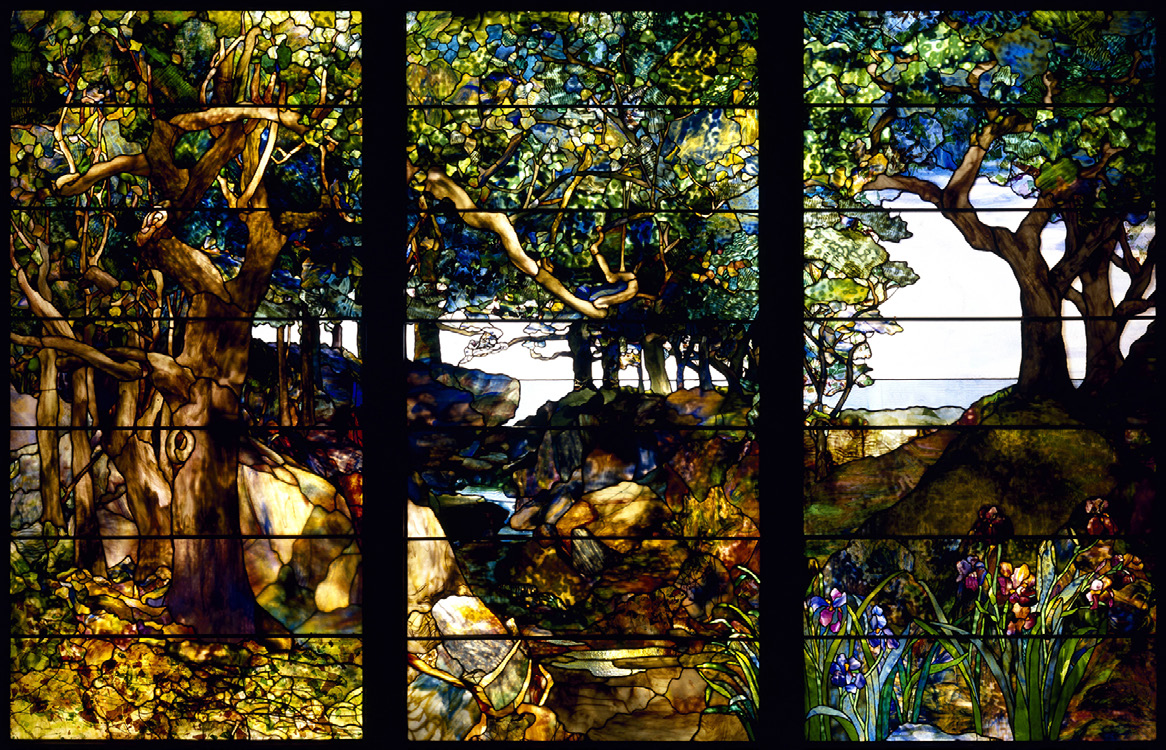
Louis Comfort Tiffany
A Wooden Landscape in Three Panels, c. 1905
Glass, copper-foil, and lead
86 1/2 x 131 9/16 x 1 3/4 in.
Museum purchase funded by the Brown Foundation Accessions Endowment, 96.765.A-.C
A design inspired by the following pieces of art, staged on a 15 1/2-inch square x 40-inch-tall white pedestal. Design may not exceed 15 inches from the center of the pedestal. Gallery height is 12 feet. Gallery wall color is Farrow & Ball 222 Brinjal. Viewed from four sides and judged from three sides.
Class Consultant: Renee Davis / 832-215-5766 / rdominguedavis@hotmail.com
Division: Division I: Floral Design
Location: Beck Gallery 108
Fee: Free
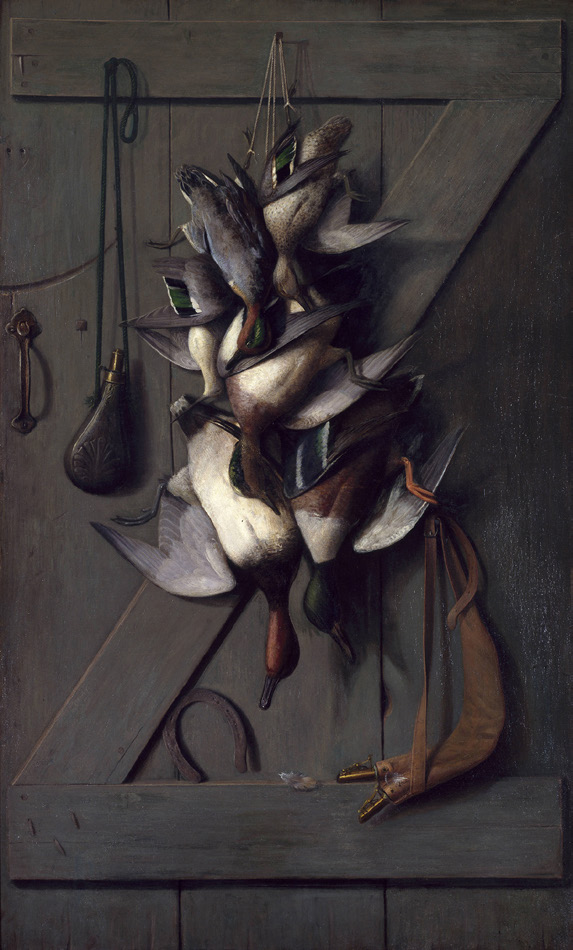
Richard LaBarre Goodwin
Hunting Still Life, c. 1890
Oil on canvas
55 1/2 x 34 in.
Gift of the Junior League of Houston, 71.37
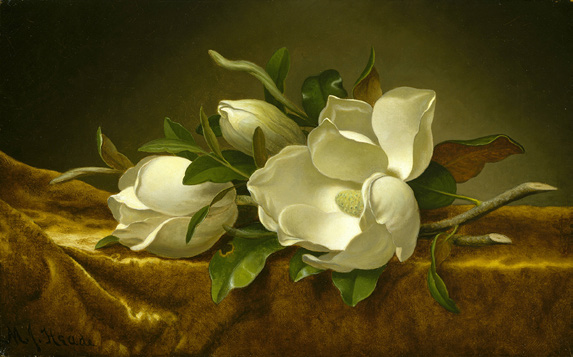
Martin Johnson Heade
Magnolias on Gold Velvet Cloth, c. 1888–90
Oil on canvas
14 13/16 x 24 in.
Museum purchase funded by the Alice Pratt Brown Museum Fund, Isabel B. Wilson, and The Brown Foundation, Inc., 99.182
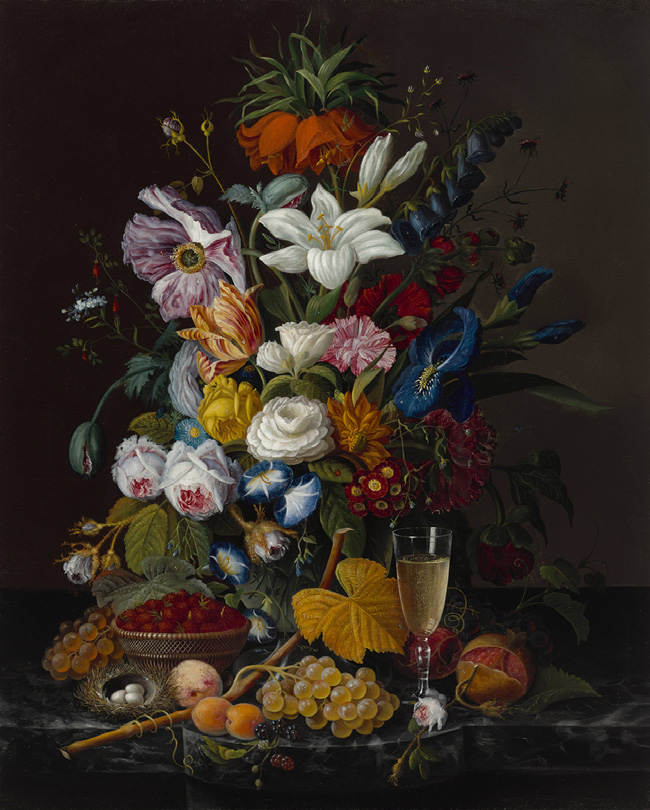
Severin Roesen
Victorian Bouquet, c. 1850–55
Oil on canvas
36 1/8 x 29 in.
Museum purchase funded by the Agnes Cullen Arnold Endowment, 71.21
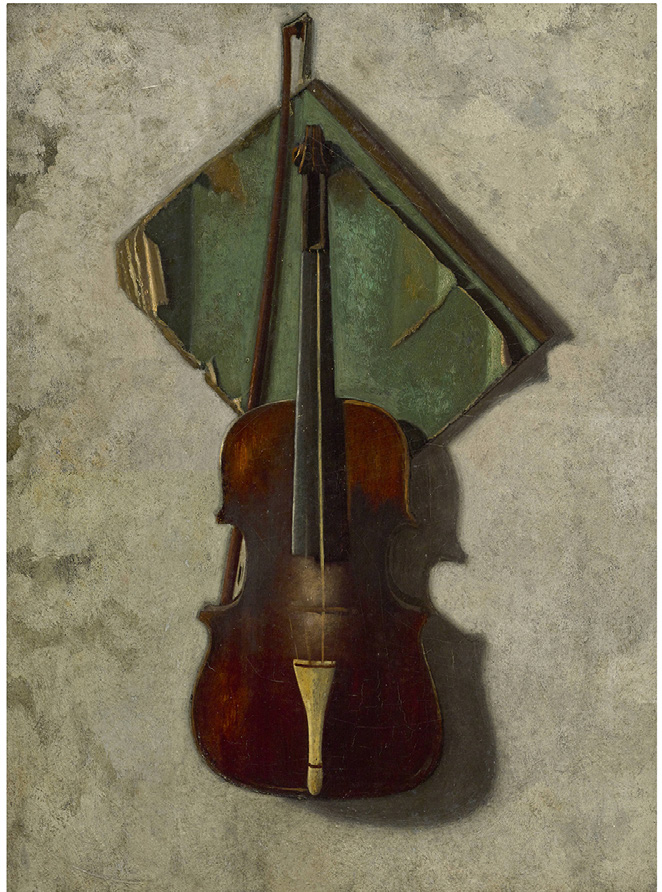
John Frederick Peto
Hanging Violin, Bow, and Notebook, c. 1890s
Oil on panel
14 x 10 in.
Fayez S. Sarofim Collection
A design inspired by the Egyptian sarcophagus. Staged on a 14-inch square x 40-inch-tall white pedestal. Design may not exceed 12 inches from the center of the pedestal. Gallery height is 70 feet. Gallery wall color is Benjamin Moore Super White. Viewed and judged from four sides. Exhibitor will be notified as to placement of pedestal in the gallery.
Class Consultant: Renee Davis / 832-215-5766 / rdominguedavis@hotmail.com
Division: Division I: Floral Design
Location: Beck Gallery 200
Fee: Free
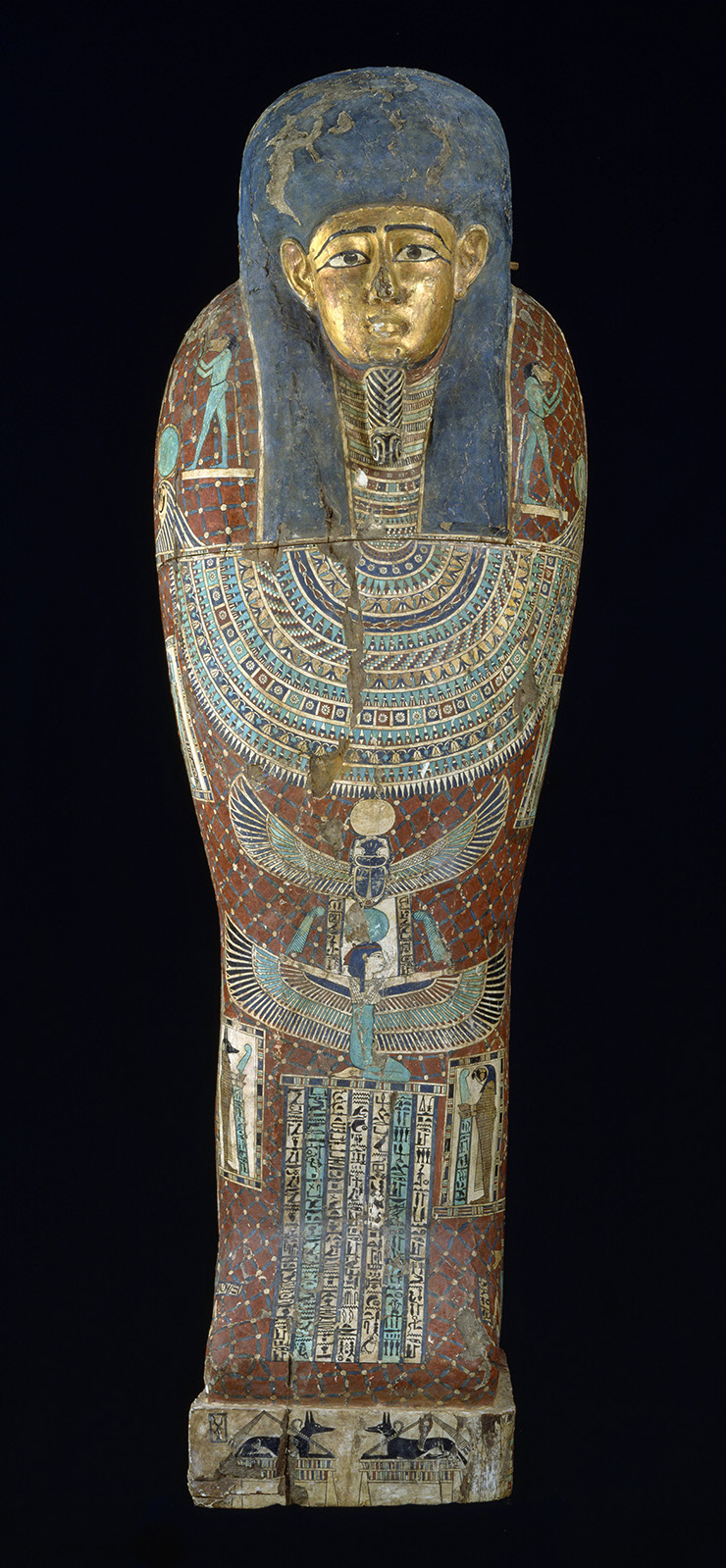
Unknown Egyptian
Coffin of Pedi-Osiris, c. 332–30 BC
Carved and painted wood and gold leaf
86 1/8 x 26 x 18 in.
Museum purchase funded by the Alice Pratt Brown Museum Fund, 2000.560.A,.B
Elaborate headdress of primarily fresh plant material worn by the royalty of any culture. Staged using a black, 18-inch-tall Styrofoam head form, anchored on a 16-inch square base placed on a 14-inch square x 36-inch-tall white pedestal. Design may not exceed 15 inches from the center of the pedestal and 8 feet in overall height from the floor. Gallery height is 70 feet. Gallery wall color is Benjamin Moore Super White. Viewed and judged from three sides.
Class Consultant: Wendy Askew / 713-540-1028 / texaskew2@aol.com
Division: Division I: Floral Design
Location: Beck Gallery 200
Fee: Free
A design inspired by the following pieces of art, staged on a 15 1/2-inch square x 40-inch-tall white pedestal. Design may not exceed 15 inches from the center of the pedestal. Gallery height is 15 feet. Gallery wall color is Benjamin Moore 985 Indian River. Viewed and judged from three sides.
Class Consultant: Carroll Wessels / 713-737-5540 / carrollgoodman@sbcglobal.net
Division: Division I: Floral Design
Location: Beck Gallery 220
Fee: Free
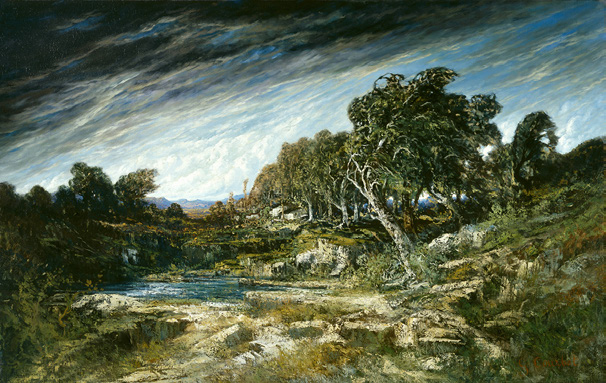
Gustave Courbet
The Gust of Wind, c. 1865
Oil on canvas
57 3/4 x 90 7/8 in.
Museum purchase funded by Caroline Wiess Law, 2002.216
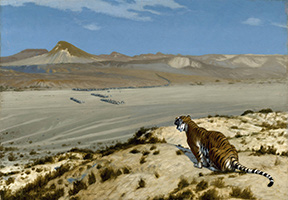
Jean-Léon Gérôme
Tiger on the Watch, 1808
Oil on canvas
41 1/8 x 58 7/8 in.
Museum purchase funded by the Alice Pratt Brown Museum Fund, the Brown Foundation Accessions Endowment, Isabel B. and Wallace S. Wilson, The Brown Foundation, Inc., and Ann Trammell, 2005.31
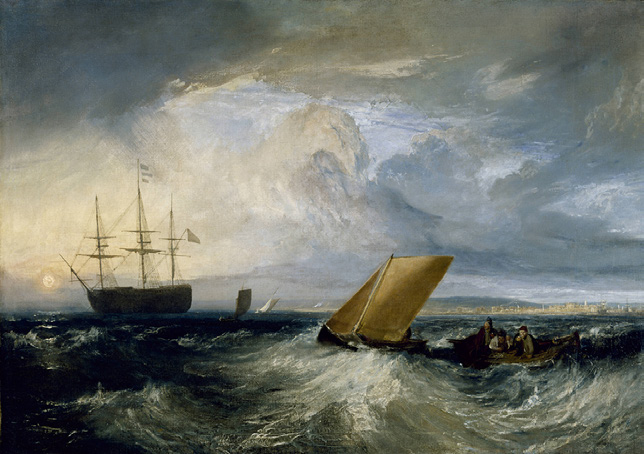
Joseph Mallord William Turner
Sheerness as Seen from the Nore (The Lloyd Seapiece), 1808
Oil on canvas
41 1/8 x 58 7/8 in.
Museum purchase funded by the Alice Pratt Brown Museum Fund, the Brown Foundation Accessions Endowment, Isabel B. and Wallace S. Wilson, The Brown Foundation, Inc., and Ann Trammell, 2005.31
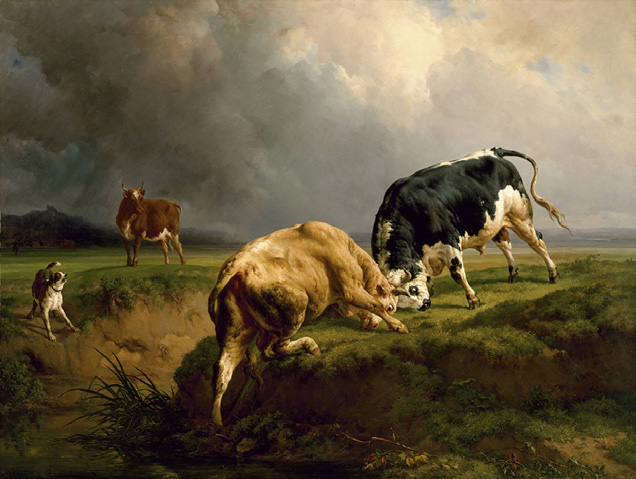
Jacques-Raymond Brascassat
A Bull Fight, 1855
Oil on canvas
57 x 75 3/4 in.
Museum purchase funded by Fayez Sarofim in honor of Meredith J. Long at “One Great Night in November, 1991,” 91.1556
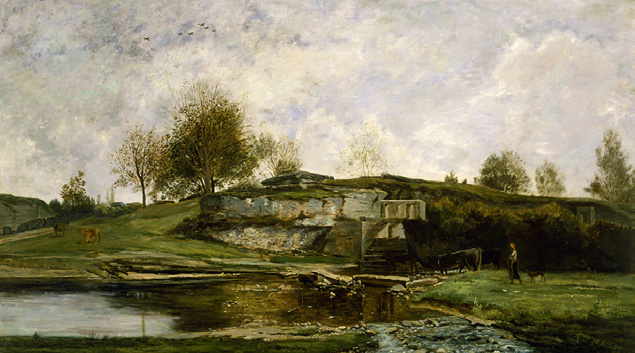
Charles-Francois Daubigny
Sluice in the Optevoz Valley, 1854
Oil on canvas
35 1/2 x 63 1/4 in.
Museum purchase funded by Anaruth and Aron S. Gordon, 79.122
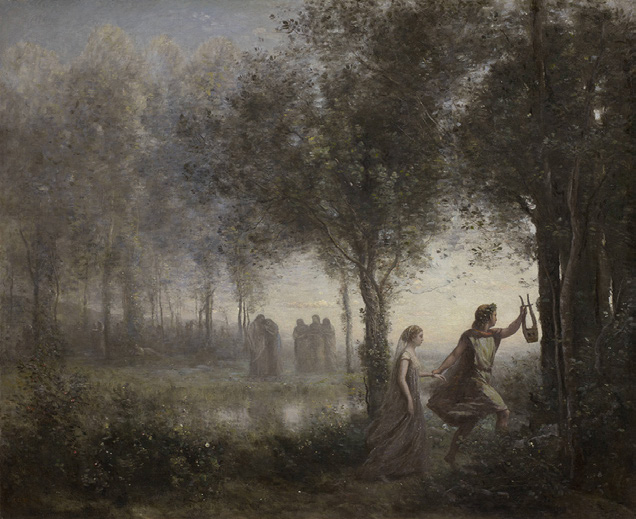
Jean-Baptiste-Camille Corot
Orpheus Leading Eurydice from the Underworld, 1861
Oil on canvas
44 3/8 x 54 in.
Museum purchase funded by the Agnes Cullen Arnold Endowment, 87.190
A design inspired by the following pieces of art, staged on a 15 1/2-inch square x 40-inch-tall white pedestal. Design may not exceed 15 inches from the center of the pedestal. Gallery height is 15 feet. Gallery wall color is Farrow & Ball Picture Gallery Red. Viewed from four sides and judged from three sides.
Class Consultant: Carroll Wessels / 713-737-5540 / carrollgoodman@sbcglobal.net
Division: Division I: Floral Design
Location: Beck Gallery 222
Fee: Free
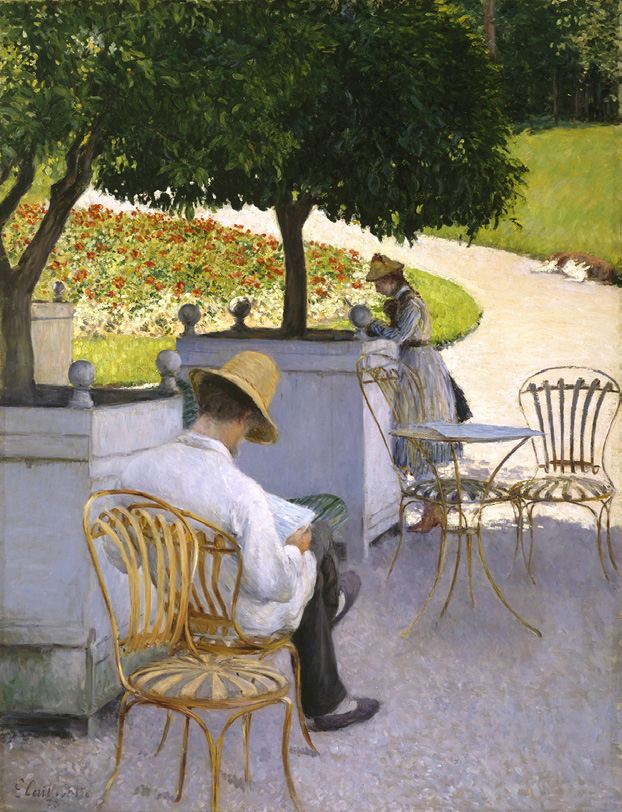
Gustave Caillebotte
The Orange Trees, 1878
Oil on canvas
61 x 46 in.
John A. and Audrey Jones Beck Collection, gift of Audrey Jones Beck, 98.273
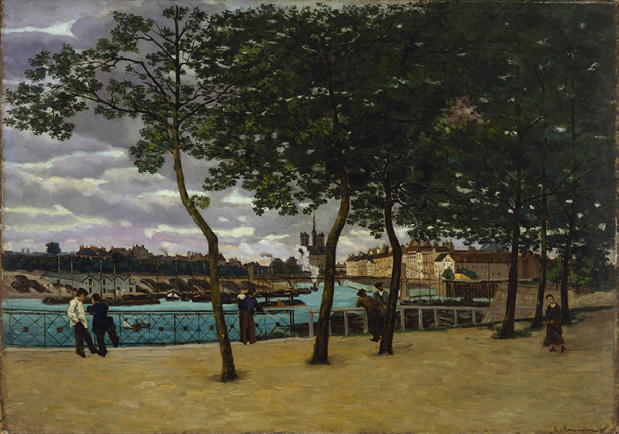
Armand Guillaumin
View of the Seine, Paris, 1871
Oil on canvas
49 3/4 x 71 3/8 in.
John A. and Audrey Jones Beck Collection, gift of Audrey Jones Beck, 71.5

Berthe Morisot
The Basket Chair, 1882
Oil on canvas
24 1/8 x 29 3/4 in.
John A. and Audrey Jones Beck Collection, gift of Audrey Jones Beck, 98.294
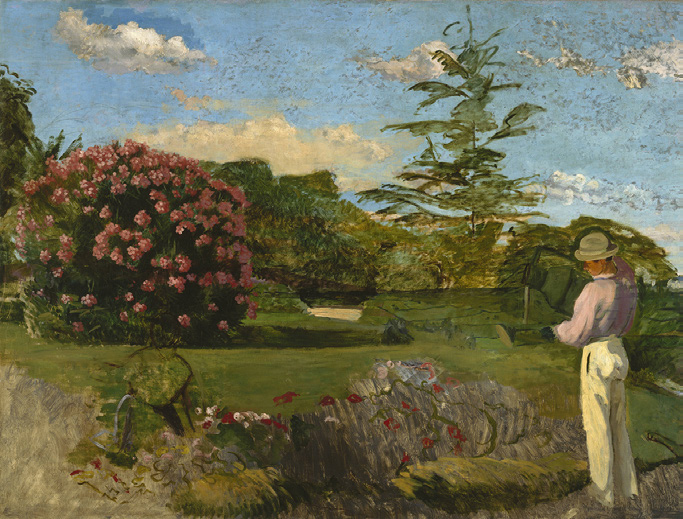
Frédéric Bazille
The Little Gardener, c. 1866–67
Oil on canvas
50 3/8 x 66 1/2 in.
John A. and Audrey Jones Beck Collection, gift of Audrey Jones Beck, 76.236
A design of predominately dried plant material inspired by the concept of emergence. Staged on a 15 1/2-inch square x 40-inch-tall white pedestal. Design not to exceed 15 inches from the center of the pedestal. Gallery height is 15 feet. Gallery wall color is Farrow & Ball Picture Gallery Red. Viewed and judged from four sides.
Class Consultant: Stacey Henningsen / 713-397-3709 / srhenningsen4@gmail.com
Division: Division I: Floral Design
Location: Beck Gallery 203
Fee: Free
A design inspired by the following painting, staged on a 15 1/2-inch square x 40-inch-tall white pedestal. Design may not exceed 15 inches from the center of the pedestal. Gallery height is 15 feet. Gallery wall color is Farrow & Ball 224 Minster Green. Viewed from four sides and judged from three sides.
Class Consultant: Renee Davis / 832-215-5766 / rdominguedavis@hotmail.com
Division: Division I: Floral Design
Location: Beck Gallery 207
Fee: Free
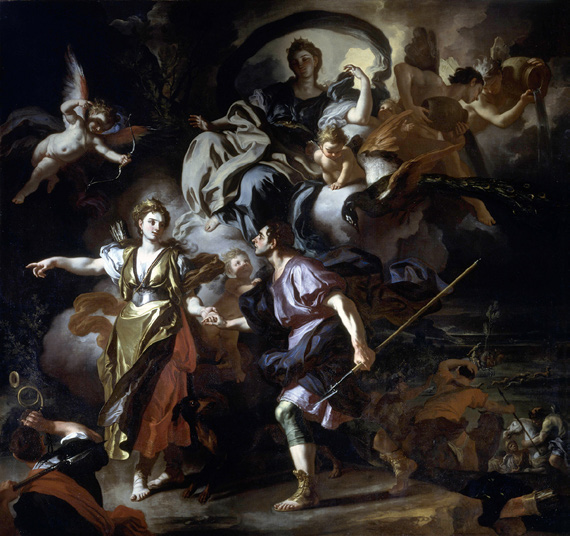
Francesco Solimena
The Royal Hunt of Dido and Aeneas, c. 1712–14
Oil on canvas
119 1/4 x 126 3/8 in.
Museum purchase funded by Lee and Joe Jamail, 2000.92
A synergistic design inspired by the following painting, staged on two 14-inch square white pedestals, placed side by side, touching. The left pedestal is 40-inches tall, the right pedestal is 34-inches tall. Design may not exceed 15 inches from the center of the pedestals. Gallery height is 15 feet. Gallery wall colors are Benjamin Moore 1614 Delray Gray and Benjamin Moore 1414 Super Nova. Viewed from four sides and judged from three sides.
Education Note: A synergistic design is a contemporary design style with three or more containers uniting to create a harmonious design. Each independent unit may be a partial design. The combined components must be connected to create a unified whole.
Class Consultant: Renee Davis / 832-215-5766 / rdominguedavis@hotmail.com
Division: Division I: Floral Design
Location: Beck Gallery 215
Fee: Free
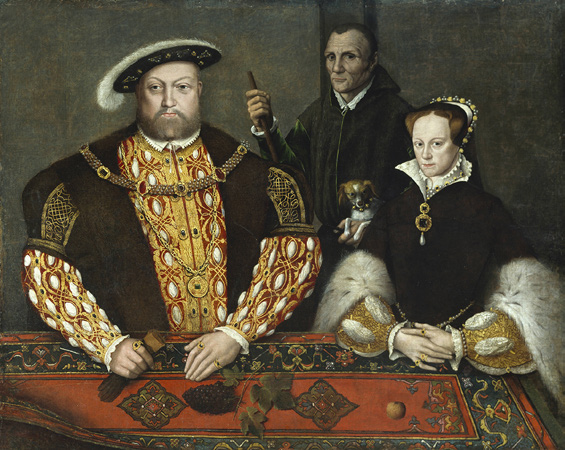
Unknown English
Posthumous Portrait of Henry VIII with Queen Mary and Will Somers the Jester, 16th century
Oil on canvas
52 x 65 in.
Sarah Campbell Blaffer Foundation, Houston, BF.1985.6
Open to provisional members of River Oaks Garden Club and The Garden Club of Houston only. A design inspired by one of the following four elements, staged on a white pedestal (dimensions provided below). Design may not exceed 15 inches from the center of the pedestal. Viewed and judged from three sides. Containers will be provided; and exhibitors will be randomly assigned which element to depict.
Class Consultants: Carroll Wessels / 713-737-5540 / carrollgoodman@sbcglobal.net Renee Davis / 832-215-5766 / rdominguedavis@hotmail.com
Division: Division I: Floral Design
Location: Kinder Lower Arrival Hall
Fee: Free
A design inspired by the grandness and style of the following artwork, staged on a 15 1/2-inch x 40-inch square white pedestal. Design may not exceed 15 inches from the center of the pedestal. Viewed and judged from three sides.
Class Consultant: Wendy Askew / 713-540-1028 / texaskew2@aol.com
Division: Division I: Floral Design
Location: Kinder Lower Arrival Hall
Fee: Free
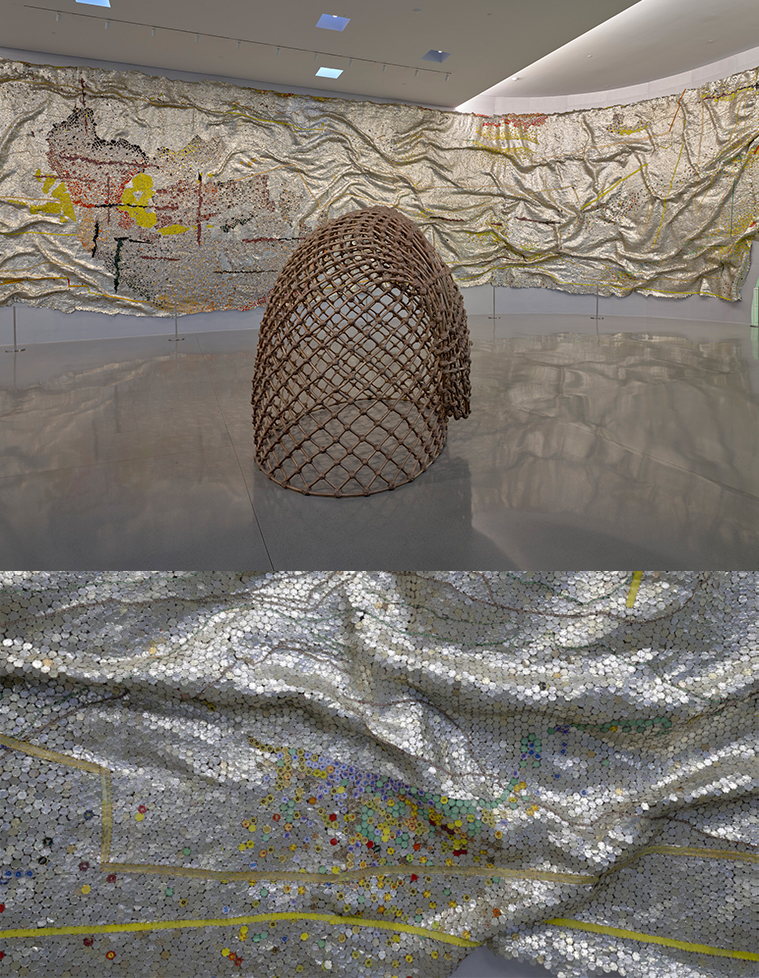
El Anatsui
Visitation, 2020
Found aluminum & copper wire
19.68 x 111.52 ft
Museum commission funded by the Caroline Wiess Law Accessions Endowment, 2019.693
A design inspired by the following sculpture, staged on a 15 1/2-inch x 40-inch square white pedestal. Design may not exceed 15 inches from the center of the pedestal. Viewed and judged from four sides.
Class Consultant: Wendy Askew / 713-540-1028 / texaskew2@aol.com
Division: Division I: Floral Design
Location: Kinder Lower Arrival Hall
Fee: Free
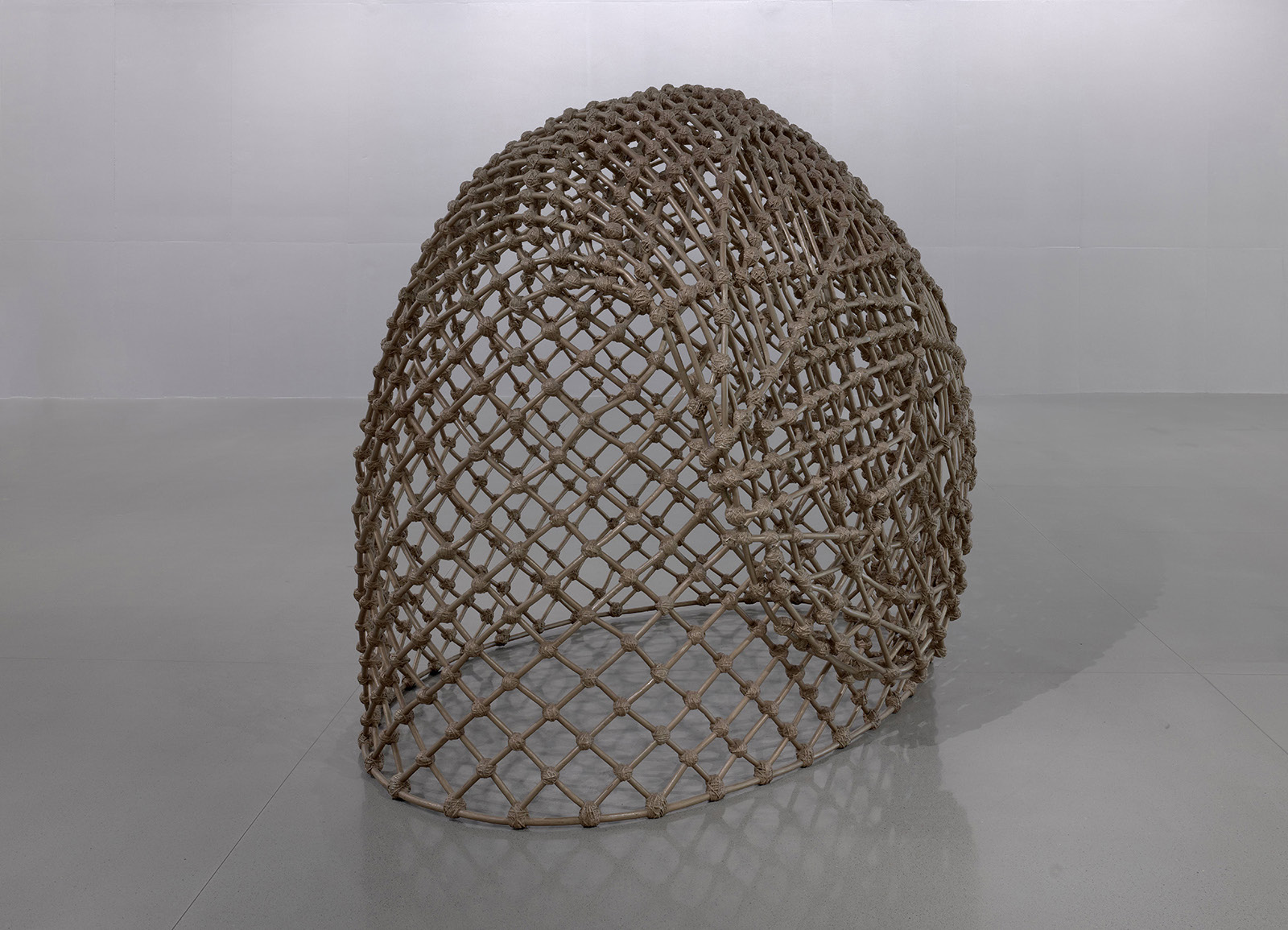
Martin Puryear
Aso Oke, 2019
Bronze, edition 2/3
84 x 104 1/2 x 73 in.
Museum purchase funded by the Caroline Wiess Law Accessions Endowment, 2020.116
Please carefully read and follow the GCA Rules, MFAH Rules, General Information, Division Guidelines, and Timetable for Exhibitors.
Online registration for classes 97–99 is open Monday, September 16, 2024, 10:00 a.m. CST through Monday, January 27, 2025, 6:00 p.m. CST at flohouston.org. For questions regarding registration, please contact the Division Chairs.
Questions regarding Classes 97–99 requirements may be directed to Estelle Lozmack, emlozmack@gmail.com, 713-724-3404.
Specimen(s) not to exceed 26 inches in length from lip of container to tip of stem (lip to tip rule), unless exception is stated in Class Description.
An annual is a plant that normally completes its life cycle (germination, flowering, seeding, dying) in one growing season.
Three-month ownership requirement (January 15, 2025).
Flowering: Three stems, same species or same cultivar, in a single container. Any foliage must be attached to stem.
A perennial is a plant that, by virtue of its biology, lives for more than two growing seasons. An annual plant that grows for more than two growing seasons, is not a perennial plant.
Flowering: One single flowering stem. Any foliage must be attached to stem.
Three stems, same species or same cultivar, in a single container.
Foliage: Single stem.
Three stems, same species or same cultivar, in a single container.
Ferns: Single stem.
Definitions, per GCA Flower Show & Judging Guide 2024 Glossary of Terms:
BULB: a modified underground stem, which is typically very short, flattened,
and surmounted by a group of usually fleshy, non-green, scalelike leaves. Bulbs are sometimes covered by a thin, membranous layer, e.g., onions and tulips, or fibrous and reticulated, tunic, e.g., Allium, or the scales may be naked, e.g., Lilium.
CORM: a bulb-like, swollen underground stem stored with reserve food and bearing buds or growing shoots on its surface, e.g., Crocus, Gladiolus, Cyclamen, and Colchicum.
RHIZOME: a thick, horizontal stem (under or above the ground) which forms roots, stores food, and sends up leaves and flowering stalks.
TUBER: a swollen underground stem, usually rounded, with buds or “eyes” from which new plants or tubers are produced, e.g., potato.
Single flowering stem with or without attached foliage.
Single stem, foliage only:
One stem or spray with at least one attached leaf, containing 5 leaflets.
Single stem, not to exceed 26 inches from lip of container to tip of branch, flowering, or fruiting.
Single stem not to exceed 26 inches from lip of container to tip of specimen.
Flowering, longer than 7 inches and up to 26 inches from lip of container to tip of specimen. Must have at least one open flower. Excluding climbing roses.
See Class 44. Foliage only in Class 63.
To be staged on a plate provided by the Committee or in a clear glass container, provided by the exhibitor.
Single stem. Three-month ownership requirement (January 15, 2025).
Cut specimens from the exhibitor’s garden arranged in a clear glass container provided by the exhibitor. May not exceed 34 inches from lip of container to tip of specimen. Minimum of three different species or different cultivars.
Key card required.
Nine-month ownership requirement (July 15, 2024).
One-year ownership requirement (April 15, 2024). One plant per container.
One-year ownership requirement (April 15, 2024). One plant per container.
Three to seven different species or different cultivars of the same genus, each in a separate container. Containers may not exceed 8 inches. Key card required.
One plant per container.
One or more plants of the same species or same cultivar in one container.
Create a pot-et-fleur design of both rooted and cut plant material in a container provided by the Committee. Container is a concrete Grecian bust measuring 5-inches wide x 8-inches tall x 6-inches deep (the mouth for planting is 4 x 4 inches). Length of ownership waived. Viewed from all sides. A 4 x 6-inch Key card and statement of intent are required. Staged on a white 15 1/2-inch square pedestal 40 inches high. Registration and entry fee payment is required by Monday, January 27, 2025. This entry must be entered on Monday, April 14, between 1:00–5:00 p.m. and passed in place.
Division: Division II: Horticulture
Location: Beck Gallery 214 & 218
Fee: $50
Create a formal miniature garden (1 inch = 1 foot) in a 20 x 10 x 5-inch lined wooden container provided by the Committee. Length of ownership waived. Painting, embellishment, and accessories permitted. Viewed from all sides. Staged on 6-foot table. A 4 x 6-inch Key card and statement of intent are required. Registration and entry fee payment is required by Monday, January 27, 2025. This entry must be entered on Monday, April 14, between 1:00–5:00 p.m. and passed in place.
Division: Division II: Horticulture
Location: Beck Gallery 214 & 218
Fee: $30
A design in an all glass open or lidded container provided by the exhibitor. Exhibits should contain a minimum of three culturally compatible rooted species or cultivars. Length of ownership waived. Accessories permitted. Viewed from all sides. Staged on a white 15 1/2-inch square pedestal 40 inches high. A 4 x 6-inch Key card and statement of intent are required. No entry fee but registration is required by Monday, January 27, 2025. This entry must be entered on Monday, April 14, between 1:00–5:00 p.m. and passed in place.
Division: Division II: Horticulture
Location: Beck Gallery 214 & 218
Fee: Free
Plants of the same species or the same cultivar.
Geraniums to be grown in a clay pot provided by the Committee. Class is open only (and mandatory) to the Provisional members of River Oaks Garden Club (2nd year) and The Garden Club of Houston. Plant and container distributed by October 26, 2024.
An exhibit of exceptional horticultural merit that does not qualify for entry elsewhere in the Horticulture Division. Entries must have been owned, grown, and in the possession of the exhibitor for a minimum of one year (April 15, 2024). Cut specimens, orchids, or hanging baskets are not permitted. Container requirement waived, as specified in Horticulture guidelines, though may not exceed 14 inches.
Please carefully read and follow the GCA Rules, MFAH Rules, General Information, and the Timetable for Exhibitors.
as per Flower Show and Judging Guide Book 4: Judging at Flower Shows, 2024 Edition.
Photographs must be removed ONLY by MFAH personnel and will be available
for pick-up on Thursday, April 17, 2025, after 12:00 p.m. for in-town exhibitors from Helen Chambers at 1804 Elmen St., Houston, TX 77019.
If a photograph is to be returned, the Photography Committee will follow guidelines #24 and #25 and start return shipping on Monday, April 21, 2025.
Finalists will be notified via email the results, as soon as possible, after judging. A Photography Results Report will be emailed to all entrants by Monday, May 5, 2025.
Email inquiries at any time.
Telephone inquiries should be made weekdays between 9:00 a.m.–5:00 p.m. CST.
Helen Chambers, helencchambers63@gmail.com, 713-906-6595
Margaret Pierce, margaret.m.pierce@icloud.com, 713-854-8049
Nancy Keely, nancydaviskeely@mac.com, 713-201-6281
“Time will bring to light whatever is hidden; it will cover up and conceal what is now shining in splendor.”
– Horace
Color
A silhouette image taken at sunrise or at sunset.
Silhouette: The dark shape and outline of someone or something visible against a lighter background.
Division: Division III: Photography
Fee: Free
“I was immediately in a state of visual splendor.”
– Todd Haynes
Color
A still life image with flowers in the classic Dutch style. Plant material required.
Still Life – Composed: An image depicting a composed arrangement of inanimate objects, either natural or man-made or a combination of both.
Division: Division III: Photography
Fee: Free
“Though nothing can bring back the hour of splendor in the grass,glory in the flower. We will grieve not, rather find strength in what remainsbehind.”
– William Wordsworth
Monochrome
An image of a harvest landscape. Plant material required.
Monochrome: An image is considered monochrome only if it is entirely shades of white, gray, and black; or shades of white, gray, or black with an additional toning throughout the photograph of ONE color (e.g. sepia, red, blue, etc.).
Division: Division III: Photography
Fee: Free
“Light-enchanted sunflower, thou who gazest ever true and tender on the sun’s revolving splendor.”
– Pedro Calderon de la Barca
Color
Close-up image of a flower taken from an unusual angle. Plant material required.
Close-up: A photo taken close to the subject to permit a close and detailed view of the object.
Division: Division III: Photography
Fee: Free
“The [city] skyline is a monument of splendour that no pyramids or palaces will ever equal or approach.”
– Ayn Rand
Black and White
An image of a city skyline, black-and-white emulsion print on brushed aluminum gold tone. Jury to judge the black-and-white digital image.
Brushed Aluminum Print: Photo is printed directly on gold-brushed aluminum. The bright parts of the image are omitted from the print, leaving the brushed aluminum visible for a unique metallic sheen.
Class Consultant: Nancy Keely, 713-201-6281, nancydaviskeely@mac.com
Division: Division III: Photography
Fee: Free
“A horse is a thing of beauty…none will tire of looking at him as long as he displays himself in his splendor.”
Xenophon
Color
An image of a hoofed animal in motion.
Division: Division III: Photography
Fee: Free
“Splendor is fruit in all its succulence.”
– Clarice Lispector
Color
A flat lay still life image that includes fruit. Plant material required.
Flat Lay: An image taken when the camera’s sensor plane is directly parallel with the surface of the composition. Typically, a picture taken from a top-down or bottom-up position.
Still Life – Composed: An image depicting a composed arrangement of inanimate objects, either natural or man-made or a combination of both.
Division: Division III: Photography
Fee: Free
“The great splendor of life is that keeps you eternally engaged,searching, exploring.”
– Osho Maitri
Color Splash
An image of a street scene photographed while traveling in a foreign country.
Color splash: (Spot Color, Selective Color) the selective use of color(s) in an otherwise grayscale image. It is not a monochrome.
Division: Division III: Photography
Fee: Free
“A landscape painting exists…as a record of nature whose splendor has moved a human heart.”
– Walter J. Phillip
Color
A cultural Landscape image of a beloved public space
Cultural landscape: A work of art, narrative of culture, or expression of regional identity. A geographic area that represents the combined works of nature and man. An image that depicts a cultural situation of practice. Cultural landscapes may include people and animals.
Division: Division III: Photography
Fee: Free
“Why do trees conceal the splendor of their roots?”
– Pablo Neruda
Color
An image of a tree or trees using Intentional Camera Movement. Plant material required.
Intentional Camera Movement (ICM): A photograph captured while purposely moving the camera.
Creative Techniques: The use of techniques to achieve a visual effect that significantly departs from a purely representational depiction of the subject matter. The visual effect may be achieved via in-camera techniques (e.g. multiple exposure, motion blur, etc.). The creative techniques photograph may include representational, abstract imagery, or both.
Division: Division III: Photography
Fee: Free
Please carefully read and follow the GCA Rules, MFAH Rules, General Information, and the Timetable for Exhibitors.
Questions regarding class requirements may be directed to the Botanical Arts Chairs by email or phone between 9:00 a.m.–5:00 p.m. CST.
Jennifer O’Donnell
713-725-5412
jdod_@me.com
Debbie Robinson
281-414-4959
debbieDrobinson@comcast.net
A design created entirely from dried plant material and made to resemble wearable jewelry in both size and function. Plant material may be treated. Mechanics or structural base may not be visible.
Noblewomen during the Renaissance had extremely ornate hairstyles. Create a comb or barrette that a noble woman would wear. Displayed on a 7-inch round, black velvet pad. Not to exceed the display pad. Judged from 4 sides and above.
Division: Division IV: Botanical Arts
Location: Beck Gallery 223
Fee: Free
Butterflies were presumably one of the pleasures that awaited the deceased in the afterlife, reflecting the Egyptian belief in the immortality of the human soul. Create a butterfly brooch fit for the splendor of the afterlife. Displayed on a 5-inch round, black velvet pad. Not to exceed the display pad. Judged from 4 sides and above.
Division: Division IV: Botanical Arts
Location: Beck Gallery 223
Fee: Free
A man-made object enhanced with dried plant material. Plant material may be treated. Complete coverage of the object is not required, unless stated in the flower show schedule.
The richness of the snuff bottle is a lesson in the social standing of snuff in both Europe and China. Embellish a snuff bottle approximately 2 1/2-inch high provided by the committee upon registration. Displayed on a 3 x 3 x 1-inch square acrylic block. Not to exceed the acrylic block. Judged from 4 sides and above.
Division: Division IV: Botanical Arts
Location: Beck Gallery 223
Fee: $20
The medieval Church was the most important patron of the arts and ornately decorated windows, such as stained glass, flourished during the Gothic period. Embellish a window “frame” in the style of this Gothic period. Standing frame is 6-inches high by 4-inches wide and will be provided by the committee upon registration. Displayed on a 4 x 7-inch black velvet pad, to be placed horizontally. Not to exceed the display pad. Judged from 4 sides and above.
Division: Division IV: Botanical Arts
Location: Beck Gallery 223
Fee: $20
A design emulating an item of clothing and/or other fashion accessory created entirely from dried plant material or a couture form that is entirely embellished with dried plant material. Plant material may be treated. Mechanics or structural base material may not be visible.
The Mianfu or coronation costume are garments for ancient Chinese Emperors. Create a couture robe fashioned after the opulence of royalty from an ancient period in China. To be crafted on a 8-inch high wooden display provided by the committee upon registration. Displayed on a 6-inch by 9-inch black velvet pad and to be placed horizontally. Not to exceed the display pad. Judged from 4 sides and above.
Division: Division IV: Botanical Arts
Location: Beck Gallery 223
Fee: $20
A design of any other structure (e.g., not Botanical Jewelry, Botanical Embellishment, or Botanical Couture) with all visible components created entirely from dried plant material. Plant material may be treated. All figural forms, including the base, must be constructed by the exhibitor. Commercially manufactured forms are not permitted.
The British monarchy’s fascination with poultry dates to Queen Victoria’s love for collecting exotic birds. Create a bird that might have been found in Queen Victoria’s menagerie. To be perched on a 5-inch high stand provided by the committee upon registration. Displayed on a 5-inch round, black velvet pad. Not to exceed the display pad. Judged from 4 sides and above.
Division: Division IV: Botanical Arts
Location: Beck Gallery 223
Fee: $20
(as per Flower Show & Judging Guide Book 4: Judging at Flower Shows, 2024 Edition):
Bayou Bend and Rienzi, The Museum of Fine Arts, Houston: The Splendid Home Gardens Projects of River Oaks Garden Club and The Garden Club of Houston
The gardens of Bayou Bend and Rienzi, designed in 1930 and 1950 respectively, exemplify and highlight the importance of garden history and good garden design. Each one has its own unique story, inspired landscape design, a blend of formal gardens and natural Texas woodlands and a rich history of plants, trees, and flowers. The purpose of this exhibit is to tell the story and share the history of these gardens as well as demonstrate how the exceptional efforts of the ROGC, GCH, and MFAH not only preserve them but also influence the “next chapter” of these splendid spaces.
The Bayou Bend house and gardens were created and developed from 1927 to 1930 and was the home of Ima Hogg or, as she was fondly called, “Miss Ima.” The gardens reflect her love of beauty, flowers, and natural woodlands; her passion for history and all things classical; her meticulous eye for detail, proportion, and scale; her keen sense of color; her hands-on, experimental approach to gardening; and her continuous personal supervision. She planted magnolias, crape myrtles, and other flowering trees with southern associations. She also planted camellias and is credited with introducing azaleas to Houston. She gave her estate and collection to the MFAH in 1957, and in 1961, she invited the River Oaks Garden Club to permanently supervise and oversee the gardens, continuing her vision. Today, Bayou Bend is one of very few formal public gardens in Texas that utilizes organic gardening practices.
In 1955, Carroll and Harris Masterson purchased a four-acre adjacent lot from Miss Ima and created their home and gardens, Rienzi. Renowned landscape architect Ralph Ellis Gunn designed their formal gardens with natural Texas woodlands in keeping with Miss Ima’s vision. He embraced the challenge of celebrating the property’s natural topography while fostering an artistic yet logical garden program. In the 1990s, the Mastersons gave their estate to the MFAH and in 1999, The Garden Club of Houston joined the MFAH in a collaborative effort to develop a masterplan to restore these gardens according to the original design. The gardens opened to the public in 1999, and The Garden Club of Houston oversees and maintains the gardens in partnership with the MFAH.
Both gardens exemplify positive garden design, employ organic and native gardening practices, and provide educational and horticulture learning opportunities for the public. Enjoy the journey of learning about these wonderful properties.
The gardens of Bayou Bend and Rienzi, filled with native and nonindigenous plants, showcase classic formal gardens and natural woodland designs. They provide horticultural education for the community. The exhibit highlights the significance of their history and the efforts to preserve and shape their future.